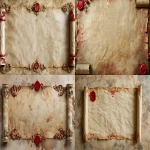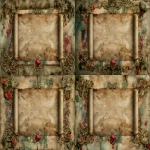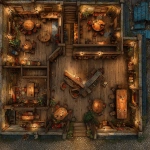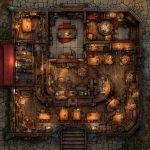Explore the Best AI Image Gallery

Beyond the Canvas: How IoT in Smart Homes is Redefining Creativity
The realm of creativity has always been a space of innovation, constantly pushing boundaries and exploring new mediums. Today, the integration of Internet of Things (IoT) technology within smart homes is ushering in a new era for artists, designers, and creators, blurring the lines between physical and digital realms.
No longer confined to traditional tools and spaces, artists are now leveraging the interconnectedness of smart devices to craft immersive experiences, interactive installations, and personalized narratives.
Potential Uses of IoT in Smart Homes for Creativity
- Interactive Installations: Imagine an art installation where visitors movements trigger changes in lighting, sound, or even projected visuals within a room. Sensors embedded in the walls and floor can detect movement patterns, creating a dynamic and responsive artwork that evolves with each interaction.
- Personalized Artistic Experiences: Smart homes equipped with IoT devices can tailor creative experiences to individual preferences. Music systems could adapt playlists based on an artists mood or the environment, while lighting could adjust hues to complement a specific artwork or design concept.
- Collaborative Creativity: IoT enables remote collaboration between artists across geographical boundaries. Smart whiteboards, shared digital canvases, and real-time communication tools facilitate brainstorming sessions, project development, and artistic co-creation even when participants are miles apart.
- Data-Driven Art: By collecting data from various sensors within a smart home—temperature, humidity, light levels, sound patterns—artists can create artworks that reflect the real-time environment. This data can be visualized in innovative ways, generating dynamic and ever-changing pieces that respond to their surroundings.
Ethical Considerations
As with any emerging technology, the integration of IoT into creative practices raises important ethical considerations:
- Data Privacy: Smart homes collect vast amounts of personal data. Artists must be mindful of how this data is used and ensure that user privacy is protected.
- Algorithmic Bias: If AI algorithms are used to generate creative content, theres a risk of bias being embedded within the output. Its crucial to address potential biases in training datasets to promote fairness and inclusivity.
- Accessibility: IoT-powered creative tools should be accessible to individuals with diverse abilities and backgrounds.
Future Trends
The convergence of IoT, smart homes, and creative industries is poised for continued growth and evolution:
- Hyper-Personalization: Creative experiences will become increasingly tailored to individual preferences, with AI algorithms learning user tastes and generating personalized content.
- Immersive Environments: Smart homes will evolve into immersive environments where art and technology seamlessly blend. Imagine interactive narratives unfolding within a room, responding to your movements and choices.
- Decentralized Creativity: Blockchain technology could empower artists by enabling direct connections with their audiences, fostering new models of ownership and monetization for creative works.
The fusion of IoT and smart homes is not just about technological advancements; its about reimagining the very nature of creativity. By embracing these innovations, artists can push the boundaries of their imagination and unlock new possibilities for expression and connection in the years to come.
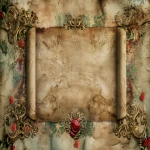


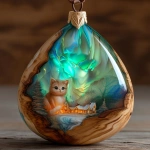
](https://images.ai-img.art/thumbnails/150/031692dcf8fbf869092e8cea50f9411a45dadc1f189ea67b8dece8e02952a7e3.webp)
](https://images.ai-img.art/thumbnails/150/7599c9e7507c77a975081d554947c9dea123e678a7ece42d30f571f639620598.webp)
](https://images.ai-img.art/thumbnails/150/efd8a9ad06ef2c72e3378698ad5e592d3d2bf8eff85c25e75db7c9902c7be353.webp)

